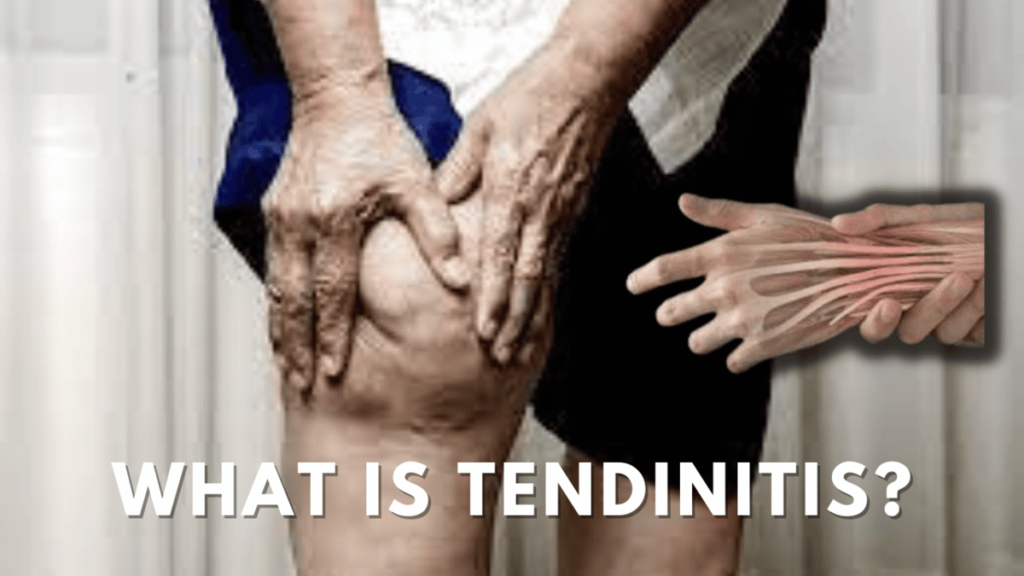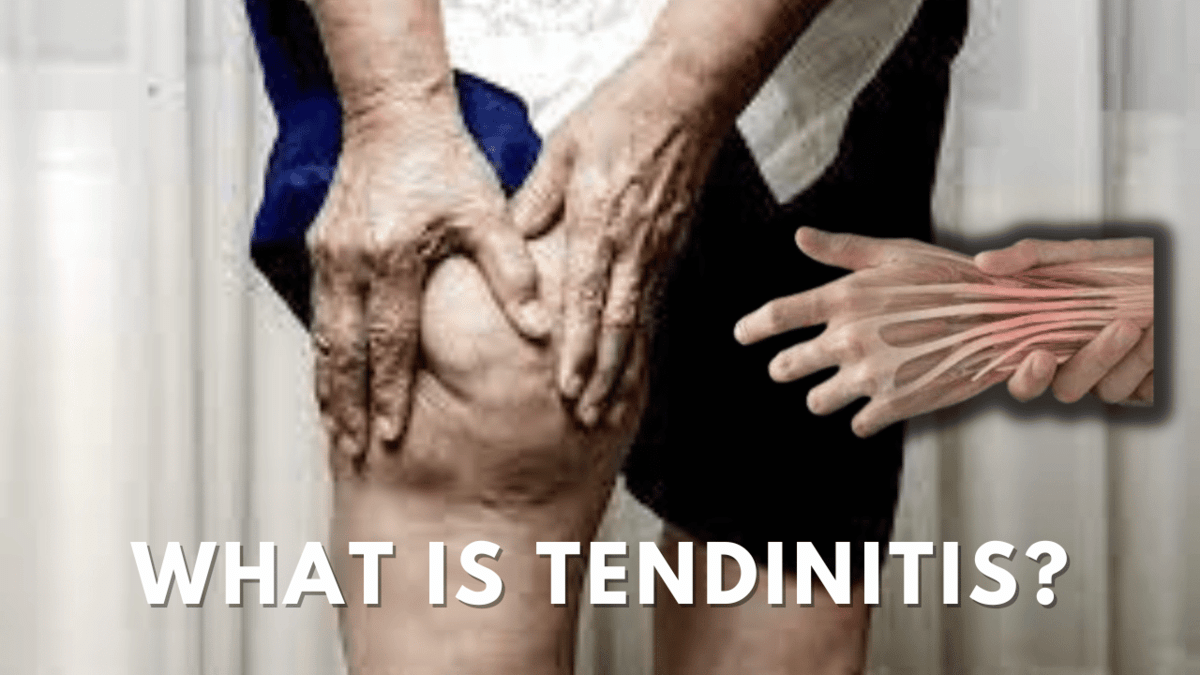Tendinitis is an inflammation and swelling of a tendon, which results in soft tissue damage known as tendinitis. The connective tissue between a muscle and its bone is called a tendon. Tendons are fibrous and thick. Tendinitis can be brought on by a sudden injury or repetitive motions that are part of everyday living, whether performed at work, at home or when exercising.
Inflammatory rheumatic disorders, metabolic abnormalities, and the use of certain medications such as fluoroquinolone antibiotics and statins have all been linked as potential causes of tendinitis in certain individuals.
Tendinitis commonly affects sections of the body, such as the shoulders, elbows, knees, wrists, and ankles, and it has the potential to produce sensitivity and pain in regions near joints. Tendinitis is a treatable injury that, if given the appropriate care, can heal rapidly. On the other hand, tendinitis can often develop into a chronic condition that leads to re-injury, ongoing discomfort, and even the possibility of tendon rupture in certain people.
Tendinitis can occur in anyone, but those who regularly engage in strenuous physical activity, such as athletes, have a greater chance of getting the condition. Adults over the age of 40 also face an increased threat from it.
Must Check to Find Long-Term Care Insurance Best Way
Tendinitis Manifestations

Tendinitis is characterized mostly by pain and swelling in the tendons and surrounding areas. The severity of the symptoms will vary from one individual to the next.
The following is a list of common tendinitis symptoms:
- Pain and tenderness on a tendon and areas near a joint
- Swelling
- Thickening of a tendon
- Muscle weakness
- Pain around the tendon at night
- Pain that gets worse when moving or doing an activity or pain that lingers for a few hours after finishing an activity or exercise
- Stiffness in the joints and muscles in the morning
- Consistent muted pain when even when resting
- Pain that does not allow you to move a joint because of the discomfort
If you have been experiencing gradually increasing pain symptoms for three to six weeks, or if you have begun to see increased swelling or redness around your joints, you should make an appointment with your primary care physician to perform an assessment.
Also, Check What is muscle tiredness?
What are the Roots of Tendonitis?
Inflammation of the tendons can lead to a condition known as tendinitis. This could result from accidents or other medical issues, or repetitive actions could cause it.
Movements Done Over and Over Again
There is a form of mechanical stress that repetitive motions can cause, and this overload can lead to tendon deterioration and inflammation.9 As soon as the tendon gets inflamed, it can rub against the bones, which will cause pain and reduce joint mobility.
Tendinitis can affect tendons all over the body, but the legs, knees, elbows, and shoulders are the most common locations where it manifests itself. In most cases, the type of tendinitis is named after the sport or activity responsible for causing the ailment. Common examples are:
- The elbow of a tennis player
- The elbow of a golfer
- The shoulder of a pitcher
- The knee of a jumper
Tendinitis is frequently brought on by mundane, day-to-day activities that involve repeating the same motions repeatedly. Tendinitis can be caused by a variety of frequent repetitive motions, including:
- Clenching your tools too tightly
- Walking in an improper posture or with an atypical stride
- Cleaning the windows and floors around the house
- Painting a ceiling or wall
- Driving for an extended amount of time while clenching the steering wheel
Tendonitis is more likely to occur in workers whose employment needs them to do similar actions, such as gardeners, carpenters, or musicians.
Medical Conditions
Several different health issues have the potential to either be the primary cause of cases of tendinitis or contribute to the symptoms of tendinitis. In most cases, metabolic abnormalities or persistent discomfort are the symptoms of these medical problems. Some examples are:
- Rheumatoid arthritis
- Osteoarthritis
- Gout
- Diabetes
- Hyperthyroidism
Medications
Antibiotics known as fluoroquinolones are employed in treating various bacterial infections, including those of the urinary tract, pneumonia, gastroenteritis, and others.
After receiving several complaints of an increase in the number of occurrences of tendinitis and tendon ruptures reported by persons using these antibiotics, in 2008, the FDA mandated that a warning label be added to fluoroquinolone medications. This was done in response to the reports. The adverse effects of these antibiotics included a reduction in tendon strength, which increased the likelihood of tendon ruptures.
In addition, certain studies have described instances of tendinitis that were caused by the use of aromatase inhibitors, glucocorticoids, and statins.
factors of danger
The likelihood of acquiring tendinitis rises in tandem with time. People under the age of 40 have a lower chance of acquiring tendinitis than adults beyond the age of. Nevertheless, there are aspects of the risk that are under your control. The following are some elements associated with movement and exercise that may raise your chance of acquiring tendinitis.
- Sudden increases in training and exercise
- Poor movement patterns (for example, an aberrant running gait and poor skills for weightlifting)
- Poor equipment (for example, jogging with worn-out running shoes)
- Sudden increases in training and activity
How is the diagnosis of tendinitis made?
Your healthcare practitioner will utilize various diagnostic and treatment methods to arrive at a conclusion regarding the extent of your tendinitis and arrive at a diagnosis. Methods include analyzing your medical history and current physical History, carrying out a physical examination, and resorting to diagnostic imaging only if these other approaches prove insufficient.
Medical History
Because a sudden injury or repeated motions can cause tendinitis, your doctor will begin by asking you to describe the situation or activity that initially caused your discomfort. This is because a sudden injury or repetitive motions can cause tendinitis
Your doctor may ask you additional, more specific questions to better understand how the injury occurred. Your physician may ask you questions such as the following:
- Have you recently undergone any unexpected rise in the frequency of your workouts?
- Has there been any specific change in the equipment you’re using or the type of activity you’re doing (for example, you may have switched to a different racquet or been running on a flatter surface than you were accustomed to)?
- After lengthy inactivity, did you start working out again not too long ago?
- Is there a history of inflammatory diseases in your family (such as inflammatory joint or spinal disease, psoriasis, or inflammatory bowel illness)?
- Have you been on any of the following drugs, quinolone antibiotics, aromatase inhibitors, or statins, in the recent past?
An examination of the body
Your doctor will undertake a palpation assessment to diagnose tendinitis as part of the physical examination. This involves applying gentle to hard pressure with their palms or fingers to the problematic area to evaluate any structural abnormalities, such as thickening of the tendon. For doctors to better understand the extent of the damage to some deeper tendons, they may need to apply more force to the area.
In addition, while performing a physical examination on you, your physician may check the structures, joints, and any other elements of your body that work together with your tendon to enable movement. This examination can help determine whether you have a less serious condition, tendinitis, or more serious damage, such as a tendon rupture.
Imaging
In certain instances, a physician may order imaging tests, such as X-rays, magnetic resonance imaging (MRI), or ultrasounds, to obtain a more accurate assessment of the condition of a damaged tendon.
These imaging techniques can provide medical professionals with a comprehensive picture of the condition of a patient’s tendon, illuminating potential problems such as microscopic tears or tendon thickness that may be a factor in the patient’s experience of pain and inflammation associated with tendonitis.
Treatments for Tendonitis
- Get plenty of rest. One of the most important things you can do to get well from tendinitis is to get plenty of rest. This will help avoid the condition from getting worse. Your doctor may advise you to refrain from engaging in activities that cause tendinitis for a predetermined amount of time if the condition was brought on by a rigorous exercise routine or by the performance of repetitive motions at work.
- Ice: Using ice as a pain treatment approach is frequent. Application of ice, whether in the form of ice packs, cold baths, or coolant sprays, is one method for reducing swelling and relieving pain. It is possible that your physician would suggest that you apply ice to the damaged tendon for 10 to 15 minutes, many times each day.
- Medications: To assists in managing the pain, your physician may recommend anti-inflammatory medications such as aspirin and ibuprofen. These nonprescription anti-inflammatory medications are available as oral tablets and topical creams and can be purchased without a prescription. Corticosteroids are another treatment option, and they are typically given in the form of injections directly into the tendon that is afflicted with inflammation.
- Structural supports or ergonomics: Your doctor may recommend support devices to help prevent exacerbating your tendinitis injury by removing stress from your tendon. Your doctor can prescribe these devices. Canes, splits, braces, and orthotics are some examples of the types of medical equipment that can be used to provide support for an injured limb while it is undergoing the healing process.
- Physical therapy: If you continue to experience symptoms of tendinitis for more than a few weeks, your doctor may recommend that you see a physical therapist. They may assist you in performing range-of-motion exercises intended to gradually strengthen the injured tendon and muscles around it, improve mobility, and prevent re-injury. These activities are designed to be performed by the patient.
- Surgery: In certain instances, surgery is required to remove inflammatory tissue from within and around the tendon. Suppose there is no discernible improvement in the tendinitis symptoms you are experiencing after six to twelve months of following a physical therapy routine. In that case, your healthcare professional may suggest that you undergo surgery.8 In addition, surgery is required to repair the damage produced by a torn tendon if the symptoms of tendinitis worsen over time and the tendon that has been weakened eventually tears completely.
How to Avoid Tendonitis in the Future
Tendinitis is a condition that the use of a variety of prophylactic strategies can avoid. The likelihood of getting tendinitis as a result of exercise, repetitive motions at work, or ordinary day-to-day activities can be decreased by taking one or more of the following preventative measures:
- Before beginning an exercise routine, stretch and warm up your muscles.
- When beginning a new workout routine or activity, gradually increase the intensity of your workout over time.
- Exercise consistently rather than on an ad hoc basis.
- Figure out how to maintain the right posture and make it a habit. Ensure that the exercise equipment you use is a good fit for you or the appropriate size.
- Stop doing any activity or action that is causing you joint pain; don’t grip things too tightly or for too long.
- Wear comfortable shoes and check them for wear and tear regularly.
- Try to avoid carrying excessively heavy things.
Complications Associated With It
If your tendinitis continues to worsen, you risk re-injuring the tendon that is already inflamed or tearing the tendon completely, either of which may require surgery and a longer length of time to heal from the effects.
The Achilles tendon is the one that snaps the most frequently when a tendon ruptures. On average, full recovery from Achilles tendon damage takes about six months.
Coping with tendinitis in daily life
Tendinitis is a painful ailment that can disrupt your normal day-to-day activities. Still, there are many things you can do to alleviate the discomfort caused by tendinitis and manage the associated pain. These include:
- Rest the leg experiencing tendon discomfort
- Apply ice to the affected area for 10–15 minutes regularly
- Take over-the-counter pain medication to control pain sensations.
- Get started on a rehabilitation program
- Put a split or a brace on the leg that’s been injured



